|
 Seminars Seminars

Series: Topics in the Aesthetics of Music and Sound
University of Southern Denmark, Campusvej 55, 5230 Odense M, Denmark







 English: All of the seminars are conducted in English (unless, of course, all participants present during a given seminar happen to English: All of the seminars are conducted in English (unless, of course, all participants present during a given seminar happen to speak Danish). speak Danish).

 Skype: Throughout the semester, we will continue to experiment with long-distance audience participation via Skype. This has proven to be quite successful, with audience members participating from as many as three countries at a time! If you are interested in attending a Skype: Throughout the semester, we will continue to experiment with long-distance audience participation via Skype. This has proven to be quite successful, with audience members participating from as many as three countries at a time! If you are interested in attending a  seminar in this manner, please get in touch with Cynthia M. Grund a few days in advance at cmgrund@sdu.dk. seminar in this manner, please get in touch with Cynthia M. Grund a few days in advance at cmgrund@sdu.dk.
 Lunchtime Concerts: Please note that there will be five lunchtime concerts between 12 noon and 1 p.m. throughout Lunchtime Concerts: Please note that there will be five lunchtime concerts between 12 noon and 1 p.m. throughout  the fall semester 2013. Please watch the page http://soundmusicresearch.org/lunchtimeconcerts.html for updates. the fall semester 2013. Please watch the page http://soundmusicresearch.org/lunchtimeconcerts.html for updates.

SEMINARS, FALL 2013

Thursday, September 5, 2013 3:15-5 p.m. in U73
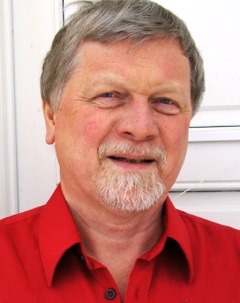
Music in the Brain and Body
Erik Christensen, PhD, Aalborg University.
Abstract: Erik Christensen will present an introduction to research in the neurosciences and music, with special focus on research highlights 2011-2013. His PhD thesis ”Music Listening, Music Therapy, Phenomenology and Neuroscience” is available online at http://www.mt-phd.aau.dk/phd-theses/.
The presentation introduces central issues in neuroscience, including music’s relation to motion and entrainment, emotion and pleasure, novelty and memory. An overview indicates methods, perspectives and limitations of current research.
Music exerts a direct impact on the body, engages the whole brain, and activates particular functions in the brain.
Musical examples illustrate bodily reactions to music, such as arousal, tension and relaxation, expectation, prediction and fulfillment. Some music listeners experience ”chills” or ”shivers down the spine” triggered by well-known music.
Images of the brain clarify functional systems of the brain essential for the musical experience, including different levels in the brain, multisensory integration, and the potential functions of the neuromodulators dopamine, serotonin and acetylcholine.
Examples from music therapy research indicate the potential effects of music in stress treatment and stroke rehabilitation.
Final remarks point out differences between two important approaches to insight in music, the first-person perspective of music phenomenology and the third-person perspective of neuroscience, as well as current attempts at reconciling these two fields of research.
PLEASE NOTE: Erik has kindly made the excellent slide presentation which accompanied his lecture available HERE.
Poster for the seminar available HERE.
Audience participation via Skype is also welcome.

Thursday, September 12, 2013 3:15-5 p.m. in U73

Content v. Competition, or
Is Music Really So Different from - Sport?
Janus Araghipour, Pianist, Bachelor of Fine Arts, currently enrolled in the Master’s Program in Performance at The Academy of Music and Dramatic Arts, Odense and an MA student of Dr. Andrzej Jasinski, Katowice, Poland, and
Cynthia M. Grund, Associate Professor, Philosophy; Institute for the Study of Culture; University of Southern Denmark.
Abstract: Janus Aragphipour has seriously begun performing in high-level European piano competitions; Cynthia M. Grund has presented work examining whether or not music is basically a sport together with William Westney (Paul Whitfield Horn Professor of Piano, Artist-in-Residence School of Music, Texas Tech University) last year at the Annual Meeting of the Danish Philosophical Association and at the Annual Meeting of the American Society for Aesthetics.
Today Araghipour and Grund will present and discuss their positions regarding the music-sports connection (or lack t hereof) in a lecture dialogue. Some of the issues which will be discussed are: hereof) in a lecture dialogue. Some of the issues which will be discussed are:
- is it a cultural prejudice that the physicality associated with musical performance is somehow of a "finer" sort than that associated with sporting activity?
- is it a cultural prejudice that there is something more "meaningful" and "profound" inherent in musical practices compared with sporting practices?
- how does a comparison of/contrasting of audiences at musical performances with those who come to observe sporting events fare on closer inspection?
Poster for the seminar available HERE.
Audience participation via Skype is also welcome
- Janus Araghipour will also be a featured performer during the first Lunchtime Concert (Thursday, September 12, 12:00-13:00) during the fall season of 2013 (the 29th since Janus was the first artist to give a Lunchtime Concert at SDU in April 2010!).The concert will be held in a new venue associated with Cafeteria 4 as a result of the construction work that was completed during the summer of 2013.

Thursday, September 19, 3:15-5 p.m. in U73

Beat, Bebop and Pop
Mogens Davidsen, PhD, Associate Professor, Institute for the Study of Culture, University of Southern Denmark.
Abstract: The presentation will attempt a transdisciplinary account of the similarities between Beat-literature (Jack Kerouac’s On the Road in particular), Bebop-jazz (as played by Thelonius Monk, Dizzy Gillespie and Charlie Parker), Abstract Expressionism and Pop Art (in the works of Jackson Pollock, Andy Warhole and Roy Lichtenstein). I regard each of these art forms as a sort of reality correlation, attempting to include a character of the world, otherwise excluded by the human mind as “disturbing” or “irrelevant”. In a further perspective these provocative articulations could be seen as a formal revolt against American conformity and rational-mindedness in the mid-twentieth century, hence making the artistic form compatible with the rebellious content of the literature, music and pictorial art of the time.
Phenomena such as “cliché”, “improvisation”, “chord changes”, “banality” and “riff” will play a key role in characterizing the relationship between the respective artistic expressions, and the philosophy of Henri Bergson will serve as theoretical background of my survey.
Poster for the seminar available HERE.
Audience participation via Skype is also welcome.

Thursday, September 26, 2013 3:15-5 p.m. in U73

Hearing with the Whole Body
Nereya Otieno, Master's Candidate in Cognition and Communication, Center for Subjectivity Research, University of Copenhagen.
Abstract: When we think of sound, we think of hearing. Fair enough. When we think of sound we do not think of our eyes, nor do we think of our hands. Understandable.
Yet sound is not a phenomenon saved solely for the organs on either side of our head. Sound demands attention from the full body, whether we are aware of it or not. In fact, your body is picking up on sounds all around you while you are reading this abstract and you’re not even trying to do so.
This talk will make a foray into the concept of sound as touch. We hear with our whole bodies. We will explore the basic properties of sound such as sound waves and frequencies and highlight its physical characteristics. The process by which the human hear operates will be explained – and we will experience the sound of hearing (because your ears make sounds, too). We will reach back in history and investigate past theories on how vibrations from sound waves are responsible for keeping the universe in sync. All of this will culminate in a discussion as to the visceral aspect of sound, the social/philosophical implications of sound as touch and its importance as to how we relate to one another.
Poster for the seminar available HERE.
Audience participation via Skype is also welcome.

Thursday, October 3, 2013, 3:15-5 p.m. in U73
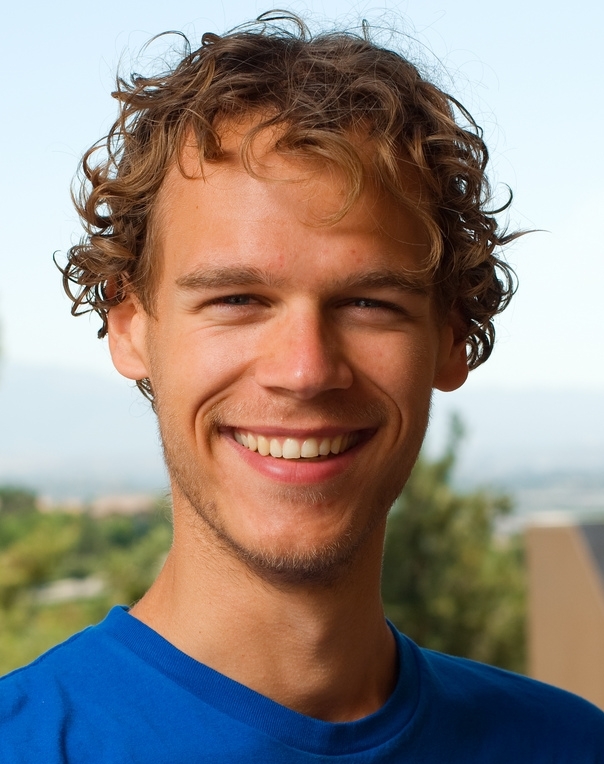
Musical Immersion – What Does It Amount To?
Simon Høffding, Center for Subjectivity Research, Department of Media, Cognition, and Communication, Faculty of Humanities, University of Copenhagen.
Via Skype
Abstract: To the best of my knowledge an adequate philosophical account of musical immersion is still pending. This presentation is intended to take the first step in constructing such an adequate account.
I approach the challenge in three steps. Firstly, I identify existing philosophical and psychological accounts of immersion, absorption, or flow such as those provided by e.g. Dreyfus, Giovanna Colombetti, Dorothee Legrand and Csikszentmihalyi.
In the second step I evaluate their respective merit and find all of them wanting in some respect or other. Here, I make the methodological point that the reason for the inadequacy of these various accounts is a failure to get close enough to the experience in question. In the same breath, I make my case for a methodological approach combining interviews with traditional phenomenological analyses as found in Husserl, Merleau-Ponty, and Sartre.
Thirdly, and finally, I present my interview-data from “The Danish String Quartet”. These interviews quickly reveal that immersion is highly complex and that a proper description and understanding of its nature best can come about by drawing on the fundamental themes found in the phenomenological literature such as inner time-consciousness, body-image vs. body-schema, pure reflection, passive synthesis, and pre-reflective self-awareness.
PLEASE NOTE: Simon has kindly made the fine slide presentation which accompanied his lecture available HERE.
Poster for the seminar available HERE.
Audience participation via Skype is also welcome

Thursday, October 10, 2013, 3:15-5 p.m. in U73
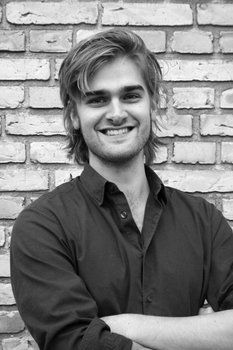
Kierkegaard, Music and Truth
Christian Verdoner Larsen, Cand. mag./Master in the History of Ideas and BA in Classical Piano.
Abstract: Music is ’sound art’ – that should be self-evident, or shouldn't it? But historically this conception of music is fairly new. From the ancient Greeks, throughout the Christian Middle Ages and until only a couple of hundred years ago, humanly produced sound art was only considered a small part of the music in (and outside) the world. This means that human sound art was viewed from a very wide perspective, where it somehow related to the music of the universe, the music of body and soul, or the music of the heavenly angels. In modern times, of course, this wide perspective has been narrowed, and at least theoretically we no longer think of sound art as referring to a strictly pre-artificial musical reality. Music is autonomous. It can eventually be seen in context of something non- or extra-musical, but essentially music is an art, and exists only as a human creation. This modern understanding of music is considered self-evident in modern musicology, but historically it has caused immense problems for the creative artists who have taken it seriously. These problems have been investigated by T.W. Adorno and others, but already in 1843, in his pseudonymous text on music “The Immediate Erotic Stages or the Musical Erotic”, Kierkegaard staged the death of the musical world-understanding and consequently of musical truth. This resulted in music now being only possible as entertainment and distraction. My seminar will focus on Kierkegaard’s dooming of the musical to a painful death – only to be able to criticize his idea of music by contrasting it with the musical metaphysics of the Danish philosopher and theologian K. E. Løgstrup. Arguably, a criticism of Kierkegaard’s understanding of music can function not only as an opening towards a criticism of the modern understanding of music – it also results in a criticism of Kierkegaard’s epistemology.
Poster for the seminar available HERE.
Audience participation via Skype is also welcome
- Christian Verdoner Larsen will also be a featured performer during the Lunchtime Concert (Thursday, October 10, 12:00-13:00) during the fall season of 2013 (the 30th since the first Lunchtime Concert at SDU in April 2010!) when he together with baritone Anders Bloch performs Schubert's Winterreise. The concert will be held in a new venue associated with Cafeteria 4 as a result of the construction work that was completed during the summer of 2013.

Thursday, November 7, 2013, 3:15-5 p.m. in U73

A Presentation of Recent International Conference Activity of Interest to Participants in Topics in the Aesthetics of Music and Sound.
Cynthia M. Grund, Associate Professor, Philosophy; Institute for the Study of Culture; University of Southern Denmark.
Abstract: Due to a severe attack of Icelandic influenza, our originally scheduled speaker, Sigrún Lilja Einarsdóttir, was obliged to cancel. We look forward to hearing from Sigrún at a later date!
Meanwhile, since a group had assembled in U73 at SDU-Odense and on Skype, we soldiered forth nonetheless. Cynthia had had the good fortune to have been rather conference-active in October-November, so the seminar ended up as a presentation of what she had experienced at
(1) The NNIMIPA(Nordic Network for the Integration of Music Informatics, Performance and Aesthetics) satellite session - Music, Movement and the Brain - on October 14, 2013 in conjunction with The 10th International Symposium on Computer Music Multidisciplinary Research (CMMR), themed Sound, Music and Motion, October 15-18, 2013 (please see http://www.nnimipa.org/marseille2013.html and http://youtu.be/U9DYVvyDA0k
(2) The CMMR symposium itself (please see CMMR2013 Proceedings (185.5 Mo) and
http://youtu.be/U9DYVvyDA0k), and
(3) The 71st annual meeting of the American Society for Aesthetics, October 30-November 2, 2013 (please seehttp://aesthetics-online.org/annual/2013p.pdf).
A lot of interesting discussion was forthcoming from the on-site and Skype audiences!
ORIGINALLY SCHEDULED FOR NOVEMBER 7 - POSTPONED UNTIL A LATER DATE:
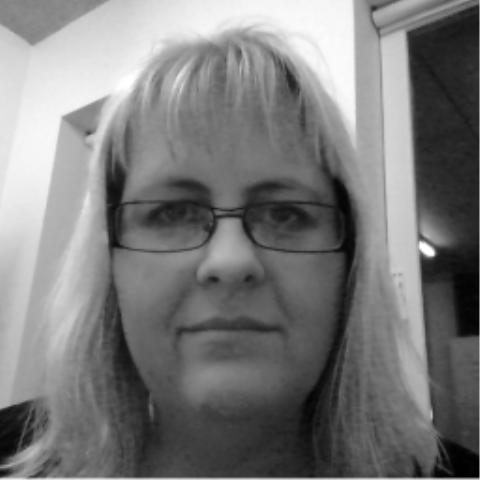 Choral Capital and Choral Identity in the Academic Context: The Oxford Choral Scholars Choral Capital and Choral Identity in the Academic Context: The Oxford Choral Scholars
Sigrún Lilja Einarsdóttir, Assistant professor, Bifröst University, Iceland.NNIMIPA Coordinator, Bifröst University, Iceland
Abstract: This paper presents a prospective socio-musical study on the historic choral tradition of Oxford college choirs in a wide context. The aim of this research will be to observe the social structures, choral capital and choral identity of selected Oxford college choirs, with special emphasis on the Oxford choral scholars. The research approach consists of a multiple-case study, where the choice of 3-4 college choirs will be based on a background analysis as well as the existing historical literature on the Oxford choral tradition. This paper will thus give a short overview of the ‘state-of-the-art’ of Oxford college choirs and introduce the prospective design of the research project itself.
Poster for the seminar available HERE.
Audience participation via Skype is also welcome

Thursday, November 14, 2013, 4:15-6 p.m. in U73. PLEASE NOTE THE CHANGE IN TIME TO ONE HOUR LATER. THIS IS DUE TO THE ANNUAL UNIVERSITY-WIDE HANS CHRISTIAN ANDERSEN ACADEMY LECTURE BEING HELD AT 3:00 p.m.in U45: TALES OF A MINSTREL GENETICIST WITH PROFESSOR MARY-CLAIRE KING, UNIVERSITY OF WASHINGTON.

Music of the Visible
Søren Schauser, Educated as a violinist and music historian; holds a PhD in Philosophy from the University of Southern Denmark.
Works as a cultural journalist and music critic for the newspaper Berlingske in Copenhagen.
Via Skype.
Abstract: One of the most intriguing disciplines in musicology is the analysis of works where central aspects of their form remain more og less hidden to the ear - but open to the eyes. The phenomenon has played an important role throughout the history of music - from the use of plainsong as a structural skeleton in Medieval times to Augenmusik in Baroque music and then on to several traditions is the 20th Century. I will show some of the most famous examples and share some thoughts on the principle in works by Mozart and Tchaikovsky.
Poster for the seminar available HERE.
Audience participation via Skpe is also welcome

Thursday, November 21, 2013, 3:15 -5 p.m. in U73
 Mobile Video as a Tool for Music Education Mobile Video as a Tool for Music Education
Mika Sihvonen, Senior Researcher in The School of Information Sciences, University of Tampere. Master of Arts in Ethnomusicology, Lic.Phil in Music Education. University of Tampere Coordinator for NNIMIPA (Nordic Network for the Integration of Music Informatics, Performance and Aesthetics).
Via Skype.
Abstract: Analysis of music students' movements and gestures, such as finger positions, has always been an important part of the work of a music teacher. Mistakes in fingering or wrong body position are easy to spot and show to the student by means of a video clip. In addition, the terabytes of video resources on the internet can be helpful when studying how to play or sing. With regard to artistic development, young students might imitate the body gestures of their idols or study playing technique in a very detailed way.
The instructional video has a relatively long tradition within music education technology and it has been usually been associated with robust main frame computers and professional video equipment. Today's mobile devices, however - such the smart phone and the tablet PC - might show themselves to be very useful tools in music teaching and learning. After recording a video clip with a modern mobile device, the clip can be used in many ways with regard to music learning, music teaching or participation in music culture.
In this presentation I present several methods for utilizing mobile video as a tool for music learning. The significance of the video expression can be multifaceted with regard to the students’ or teachers’ musical comprehension. We can use it as a merely instructional tool or as a source of inspiration. Video utilized in a networked file format poses yet another challenge for music schools - when recording, sharing, storing and editing live shows.
Poster for the seminar available HERE.
Audience participation via Skype is also welcome

Thursday, November 28, 2013, 3:15-5 p.m. in U73

Audiovisual Relationships in VJing (Live Video-Musical-Performance)
Lau Lindquist, Master's Degree in Performance Design and Philosophy, Roskilde University and VJ teacher at Engelsholm Folk High School.
Abstract: During my nine years of practice as a VJ - a live video performance artist - I have explored the relations between music and video in live performance. Instead of playing music instruments, I use electronic video production equipment to make real-time images at concerts. On a technical level this is very similar to TV production; on a practical level it is more comparable to playing electronic music. The final result is a type of video art, which is structured in conjunction to music, that can take the form of a narrative as in film, but more often develops other forms over the course of the performance. In some senses it can be compared to dance, TV, poetry, abstract painting and concert lighting among other endeavors.
In this field of practice it has become increasingly evident to me that there is a gap in the knowledge about how the music and video relate to each other. Often VJs assert that the videoimages relate to music, but what are these relations? Exactly what in the moving images relates to the elements in the music and performance?
Using a mix of Peircean Semiotics, Conceptual Metaphor, Film Music Studies and Performance Studies I have developed an analytical model, which highlights different types of relations, and define some of the most common types of correlations between video and music.
As a practitioner I am familiar with the technical, practical dimensions of the field. This presentation is an attempt to explain what happens on a semiotic level.
This presentation contains streamed audiovisual examples, so a good Internet connection is preferable for long distance participation.
Poster for the seminar available HERE.
Audience participation via Skype is also welcome

Thursday, December 5, 2013, 3:15-5 p.m. in U73
NOTE: CASPIAN CHRISTIANSEN RESCHEDULED - WATCH FOR NEW DATE DURING 2014!

Music and Feeling(s)
Caspian Christiansen, Master's Student in Philosophy, Copenhagen University; Musical Autodidact.
Abstract: By means of music - as is so often the case with art in general - we asymptotically approach the ineffable, and yet music enables us to "say" more than often is the case about that about which we can't "say" anything at all. For Caspian, this is what it means when it is said that "music is the language of feeling(s)."
During the last ten years he has played in various musical constellations. As an autodidactic musician and singer/songwriter, Caspian's lyrics exude presence and reflection as they strive for immediacy and unadornedness.
Today Caspian wishes to present some of his own thoughts about his own compositions, to perform excerpts from them and to share his experiences regarding the relationship between feeling and music. Against a backdrop of studies in philosophy, Caspian will furthermore examine the subject of authenticity, contrrbuting his own experiences and reflections formed through years spent in and around the rhythmic music milieu in Danmark.
Poster for the seminar available HERE.
Audience participation via Skype is also welcome

Thursday, December 12, 2013, 3:15-5 p.m. in U73
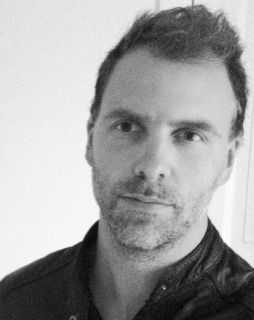
The Search for the Autonomous Creative Composer
Mikkel Snorre Wilms Boysen
Associate professor, University College Zealand, Denmark
Cand. mag and Master from the University of Copenhagen and the University of Aarhus; PhD student at the University of Southern Denmark.
Composer, musician and writer of articles about music, creativity and philosophy.
Areas of research: Creativity, music, technology and pedagogy
Abstract:Often, contemporary music basically consists of a mixture of various types of pre-produced musical material. Accordingly, the compositional process is most of all characterized by selection among different fragments and options of combinations. Consequently, creative work does not necessarily require traditional musical experience in terms of knowledge about orchestration, harmony etc. The composer simply tries out different sounds and combinations before finally making a choice based on his/hers idiosyncratic taste and artistic vision. As a result, traditional notions of the composer’s autonomy are challenged. Where is the musical idea born, if the composer primarily chooses between existing musical materiel? In the presentation, references will be made to several case studies involving children, young people, and adults making music by using computers. The theoretical framework will be provided partly by Actor-Network Theory, and the subsequent conceptualisation of technology as a significant non-human actor. Finally, the presentation will involve a discussion of basic questions regarding musical originality, value, reception, and interpretation.
Poster for the seminar available HERE.

Thursday, December 19, 2013, 3:15-5 p.m. in U73

Human Interaction with Wavelengths in Sound and Light: A Look at the Culture of the Sufi Tradition
Mary L. Tuck, currently in the MA Ethnomusicology program at Kent State University, Kent, Ohio.
(Via Skype)
Abstract: Music making is a decidedly human practice, and in comparing musical traditions, researchers find correlations with our psychological and biological responses to physical events in our environment. What happens when humans produce and experience wavelengths in a cultural event, specifically those in sound and light?
In a multidisciplinary exploration, my ethnomusicological analysis will consider potential human universals that come together in various traditions. The shared experience of what a culture holds as sacred can be revealing to what makes us human, and why we do what we do. Music is an evolving partner in the growth of this knowledge. Today, we will look at the science behind our biology and psychology of perception and consider the altered consciousness states of Sufi whirling practice. In this unique combination of movement and music we can learn something about how wavelengths created by sound and light can correlate in our bodies and minds.
Poster for the seminar available HERE.
Audience participation via Skype is also welcome.

Please see the following networks for additional information about activities within The Aesthetics of Music and Sound:
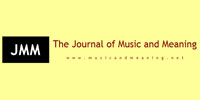
JMM: The Journal of Music and Meaning (Funded by the Danish Research Council for the Humanities.)

Nordic Network for the Integration of Music Informatics, Performance and Aesthetics (originally supported by NORDPLUS and subsequently by NORDFORSK)

netværk for tværvidenskabelige studier af musik og betydning/
network for cross-disciplinary studies of music and meaning

|
|
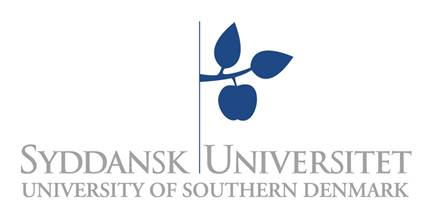

Department for the
Study of Culture
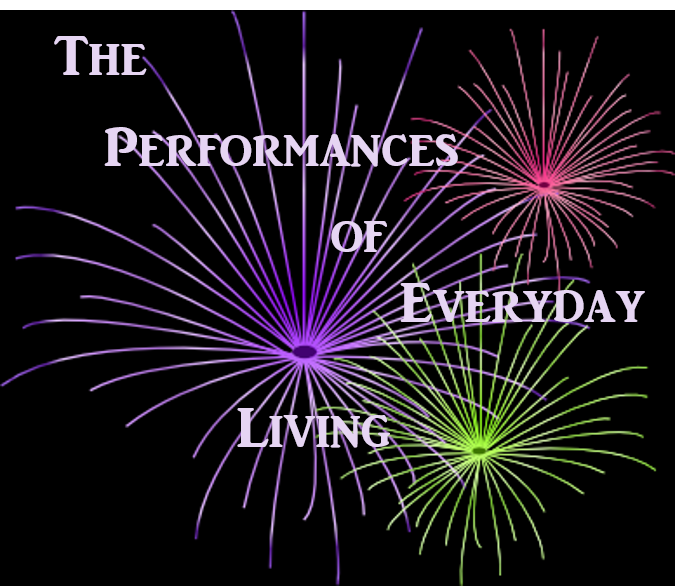
Research Director for
The Performances of
Everyday Living
Coordinator for
The Aesthetics of
Music and Sound
and
Editor and Webmaster for
www.soundmusicresearch.org:
Cynthia M. Grund
cmgrund@sdu.dk


Updates

PLEASE NOTE: During the month of March 2015 and possibly extending into April/May 2015, heavy construction will be taking place on this website behind the scenes as it "migrates" to new editing software. Please be patient with us during this period if occasionally some pages take on a strange appearance, or if updating seems to be a bit erratic. All efforts will be made to maintain the integrity of the page with the schedule for the seminar series Topics in the Aesthetics of Music and Sound: Mostly Metal here, but it will nevertheless be a good idea also to keep an eye on our Facebook group here and the regularly occurring announcements of events on it during this period. Thank you for your patience!
During March-May 2015 we will also continue to develop our new

channel, which we encourage you to visit here.
Archive
for ""Updates" and "News":
Click HERE.

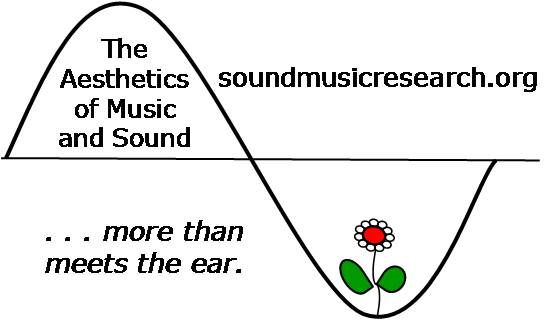
| |